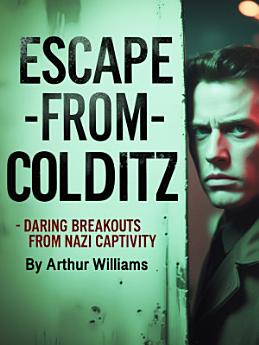Escape from Colditz: Daring Breakouts from Nazi Captivity
Arthur Williams
Ebook
31
Pages
family_home
Eligible
info
reportRatings and reviews aren’t verified Learn More
About this ebook
High above the medieval town of Colditz in Saxony, perched on a rocky outcrop that commanded the surrounding countryside, stood Oflag IV-C, the German prisoner-of-war camp that would become synonymous with the most audacious escape attempts of World War II. The imposing castle, with its thick stone walls, narrow windows, and commanding position, had been selected by the German High Command as the perfect prison for their most troublesome captives - the Allied officers who had already proven their determination to escape from other camps. What the Germans created in their attempt to build an escape-proof fortress was instead a pressure cooker of ingenuity, determination, and international cooperation that would produce some of the most remarkable escape attempts in military history.
The selection of Colditz Castle as a high-security prisoner-of-war camp reflected both its natural advantages as a fortress and its symbolic value as a demonstration of German power and efficiency. Built in the 11th century and extensively modified over the centuries, the castle presented formidable obstacles to any would-be escapers: walls that were in some places more than seven feet thick, a position that allowed guards to observe the surrounding countryside for miles in every direction, and a single access road that could be easily monitored and controlled. The German commandant and his staff believed they had created the ultimate prison, a place from which escape was not merely difficult but virtually impossible.
Rate this ebook
Tell us what you think.
Reading information
Smartphones and tablets
Install the Google Play Books app for Android and iPad/iPhone. It syncs automatically with your account and allows you to read online or offline wherever you are.
Laptops and computers
You can listen to audiobooks purchased on Google Play using your computer's web browser.
eReaders and other devices
To read on e-ink devices like Kobo eReaders, you'll need to download a file and transfer it to your device. Follow the detailed Help Center instructions to transfer the files to supported eReaders.








